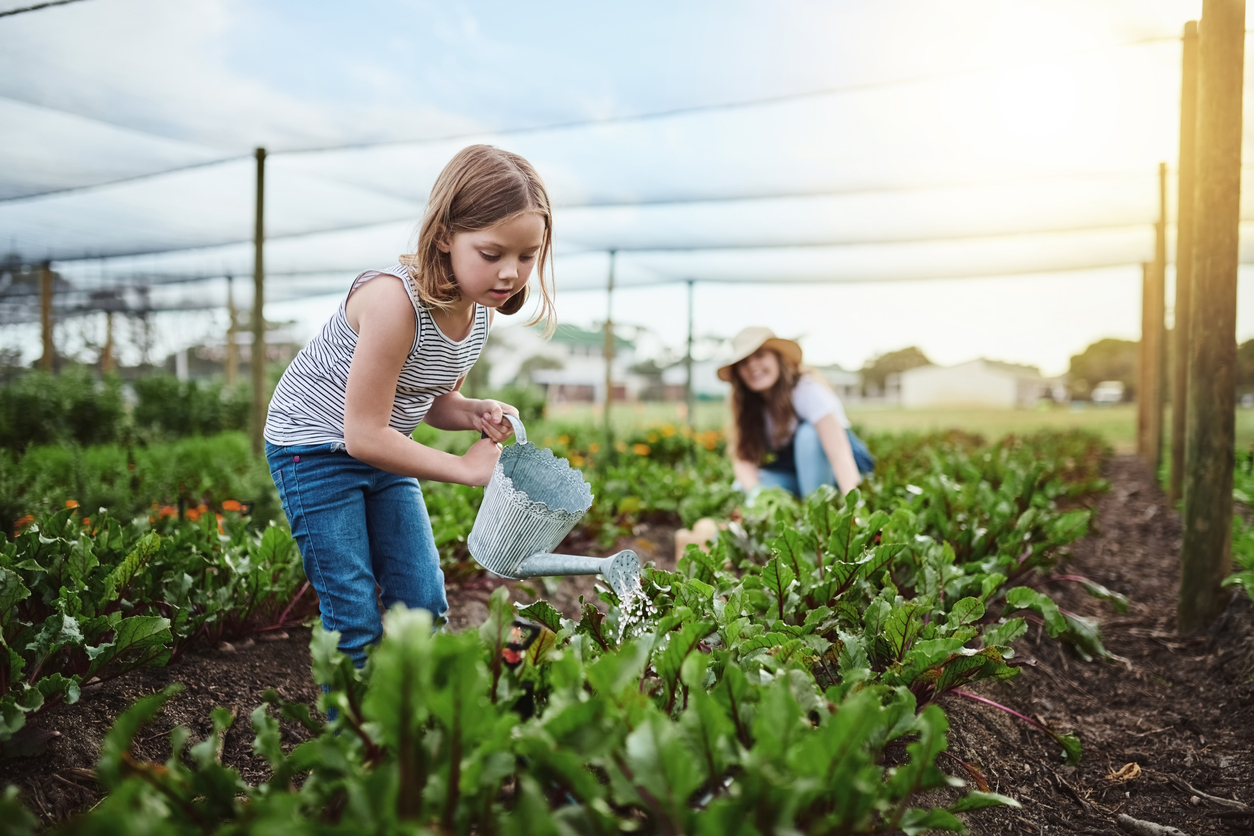Everybody always wonders and asks about how to water your garden. I remember my first vegetable garden. I spent hours fussing over which veggies to plant, and the best location to place them in my yard. After I planted everything, I reached for my garden hose and sprayed all of the plants not realizing the high-pressure nozzle was a poor choice. Newly sown seeds washed away while other seedlings were uprooted.
After that initial massacre, I switched to a low-pressure wand attachment, patted myself on the back, and walked away. I relied heavily on mother nature that year and kept forgetting to go out and water my vegetable crops regularly. This resulted in a pathetic yield of stumpy carrots, puny onions, wilted lettuce, and completely dead tomato plants.
I’m not proud of that year, but I’m grateful for the lessons learned, especially what I learned about watering my vegetable garden. Here are some basic watering questions and answers, that I hope will help you learn how to water your garden for the best vegetable crops.
Discover 7 top tips for growing, harvesting, and enjoying tomatoes from your home garden—when you access the FREE guide The Best Way to Grow Tomatoes, right now!
What kind of soil do you have?
Wait a minute, I thought we were talking about how to water your garden for the best vegetable crops. What does soil have to do with anything? In a word, EVERYTHING. Soil is typically made up of silt, clay, and loam and it’s important to know what ratio you’re working with since it will affect how much water your soil can actually hold. The USDA has a great flow chart that you can use based on a simple texture test by holding a bit of soil in your hands.
What kind of vegetable crops are you planting?
We’ll get to the actual watering parts in a minute, but reviewing what vegetable crops you have in your garden will help you figure out your watering plan. Make a list of all of your vegetables and their watering needs. It’s helpful if the vegetables with similar watering needs are placed near each other in your garden. A general rule of thumb for all vegetables is that they need at least one inch of water per week (that’s including rainfall). Depending on your soil type you may have to water less if your soil retains more water (clay-based) or more if your soil drains water quickly (more sand content).
How should you water your vegetable garden?
My favorite method to water my garden is with a watering wand attachment. This allows me to direct the water to the base of each vegetable plant where it will be able to saturate into the roots more efficiently. The most efficient way to water your garden for the best vegetable crops is drip irrigation. However, the downside to a drip irrigation system is it can be very costly and time-consuming to start.
Whatever you do, many gardeners say to avoid the sprinkler! It may seem like a good idea to set a sprinkler and walk away for a couple of hours. But it’s really inefficient since much of the water will evaporate from the plants’ leaves before reaching the root systems.
Discover 7 top tips for growing, harvesting, and enjoying tomatoes from your home garden—when you access the FREE guide The Best Way to Grow Tomatoes, right now!
What time of day should you water your vegetable garden?
The short answer: Morning. It’s usually cooler in the morning and sunlight is not direct which means less water will evaporate from your plants. Watering in the morning will also give your crops a chance to soak up the moisture and dry its leaves. Dryer leaves help prevent fungus and other pests and diseases from forming and gathering.
Evening watering is okay too. If you go that route keep an eye on the amount of water you use so that plants aren’t sitting in too much moisture overnight.
The middle of the afternoon is the worst time to water since the heat and sun of the day will evaporate much of the water you use.
How can I help my soil retain more moisture?
Companion planting can be helpful in soil moisture retention. You could plant a taller vegetable like tomatoes next to the lower ground covering vegetables like carrots. The tomato plants provide shade for the carrots which helps them retain moisture. Another easy way to help your soil out is to add a layer of mulch around your vegetables. Mulch is a triple threat because it helps retain moisture, can deter certain plant diseases, and keeps the weeds away.
I’d love to hear your tips for how to water your garden. What’s your method? Leave a comment below.
Discover 7 top tips for growing, harvesting, and enjoying tomatoes from your home garden—when you access the FREE guide The Best Way to Grow Tomatoes, right now!
